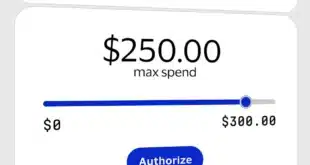With at least four separate efforts under way to build national image-exchange networks, some banking officials are starting to ask whether the substantial investment banks and processors are making in these new networks to carry check images between financial institutions is really necessary. The systems required to achieve transfer of electronic check data and digital images, they argue, already exist in the automated clearing house network. In one proposal, presented recently at the National Automated Clearing House Association's Payments 2004 trade show in Seattle, two bank executives told their audience a new ACH transaction type could be created for transactions that would include all check MICR line data as well as a hyperlink to the check image, which would be stored by the bank of first deposit or by a third party. The ACH settlement process would kick in as with any other ACH transaction type, such as electronic checks. Kerry S. Jones, a senior vice president at First National Bank of Arizona, and Joseph M. Haschka, vice president and manager of product development at TCF National Bank, argue that their proposal enjoys two major benefits: the ACH network already connects all banks and images could be accessed where the checks are truncated, rather than ferried around in huge network pipelines. “The ACH exists today and it goes to every financial institution?isn't that what we're trying to accomplish with image exchange?” asks Jones in an interview with Digital Transactions News. Check imaging, and the efforts to build new networks to swap image files rather than paper checks between payee and payor banks, gained impetus last fall with the enactment of the Check Clearing for the 21st Century Act, or Check 21. The new law, which takes effect Oct. 28, confers legal status on so-called substitute checks, which are paper printouts of images, allowing banks to eliminate much of the transportation and other costs tied up in carting 30 billion or so checks around the country annually. So far, one of the four competing networks, Oklahoma City, Okla.-based Endpoint Exchange, is in operation, handling 140,000 transactions a day. Another major system, built by Small Value Payments Co. (SVPCo.), New York, is set to go live in June. SVPCo. is owned by 22 large banks accounting for 60% of the nation's deposit accounts. And the Federal Reserve Board is behind yet another network, which it says will be ready by October. Jones and Haschka's proposal, which they presented to a standing-room only crowd in Seattle, would render these network-building efforts unnecessary, potentially saving tens of millions of dollars in hardware, software, and telecommunications costs at time when check volumes are dwindling. But they concede their idea requires a good deal of fleshing out. Among the unresolved questions, they say, are who would maintain the intranet and how the hyperlinks would be secured. NACHA was sufficiently intrigued, though, to invite the duo to present their proposal to the Herndon, Va.-based trade group's electronic check council in May. “It's a very creative idea, and deserves some attention,” says Daniel L. Miner, senior director of electronic check and risk-management services at NACHA. “But there's a lot of unanswered questions about logistics, business case, rules, and body of law. I don't think we have enough information yet to say this is something we'll throw our weight behind.” The presentation, he says, is intended only to stimulate discussion and to get reaction from the council members. Jones and Haschka know they are swimming upstream, against costs already sunk in image-exchange development and entrenched vendor interests in image networks. But they have no alternative other than to try to sell their idea to other bankers. Says Jones: “The alternative Joe and I propose doesn't work unless the industry embraces it as a standard. You can't do it unilaterally.”
Check Also
AI Commerce Gets a Boost From Visa, PayPal, and Mastercard
Visa Inc. late Wednesday introduced Visa Intelligent Commerce, an artificial intelligence-based shopping service that enables …





